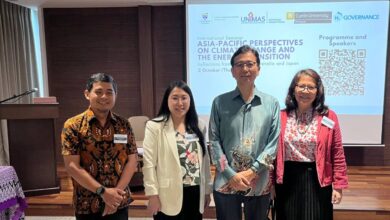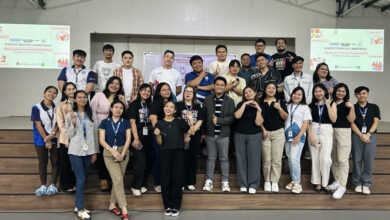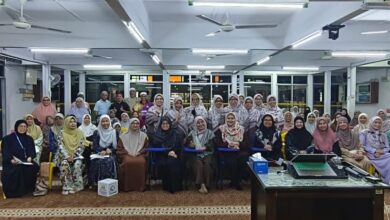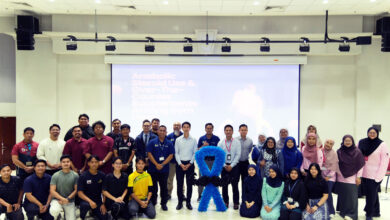Thammasat Seminar Enhances Public Confidence During Crises
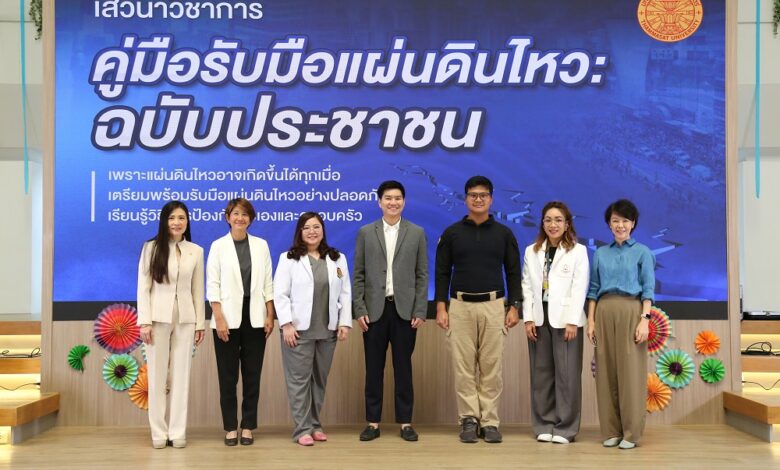
Thammasat University Develops AI System to Aid Housing Rehabilitation and Disaster Response
Thammasat University organized a special academic seminar on the topic “Earthquake Preparedness Guide: A Citizen’s Edition,” creating a space for knowledge exchange and proposing ways to prepare citizens for earthquakes or other potential disasters. The event shared knowledge on building safety assessment during earthquakes, including AI-assisted tools, and provided guidelines for safety, mental health, and media literacy. The seminar was inaugurated by Associate Professor Dr. Dumrong Adunyarittigun, Vice Rector for Academic Affairs at Thammasat University, held at the Puey Ungphakorn Library, Thammasat University, Rangsit Center.
Associate Professor Dr. Dumrong Adunyarittigun, Vice Rector for Academic Affairs at Thammasat University, stated that the earthquake that occurred on March 28, 2025, has made it clear to Thailand that disasters are closer to home than previously thought. This further highlights the necessity of enhancing the knowledge and guidelines on disaster preparedness for the public. Experts from various fields provided practical information, aligning with the university’s goal of serving society.
Associate Professor Dr. Phromphat Thansirichaisree from the Department of Civil Engineering, Faculty of Engineering, Thammasat University, revealed that the incident has raised questions regarding the structural integrity of buildings. The ability of a building to be “flexible” and “move” under seismic forces is considered a good design principle and complies with international standards, especially in earthquake-prone areas. Modern buildings are designed to flex and withstand vibrations using reinforced concrete. Swaying is normal, but excessive movement can indicate structural problems, especially after earthquakes. Buildings can also fail if they experience repetitive seismic forces or have pre-existing damage. He further stated that AI-powered crack detection systems can analyze images of buildings to assess structural abnormalities. Using drones for 3D modeling allows for the detection of changes not visible to the naked eye. These technologies can reveal hidden damages and improve building safety standards if widely implemented.
“InSpectra-o1” is a prototype application for assessing structural damage through photographs using AI, developed by Associate Professor Dr. Phromphat at the Structural Inspection and Monitoring Research Center, Department of Civil Engineering, Faculty of Engineering, Thammasat University. It is currently undergoing trial usage, allowing the public to utilize it for the preliminary inspection and assessment of cracks and damage in residential properties. This application serves as an important tool developed to consolidate information about buildings and homes, including blueprints, structures, and repair histories. It enables engineers to access information quickly, facilitates efficient building inspections, reduces time and costs, and can also be used as evidence in insurance claims, thereby minimizing disputes and instilling confidence in the public. AI can quickly assess building damage, but it’s limited by insufficient data and can only evaluate 50-60% of the damage. Engineers are still needed for further inspections. InSpectra-o1 allows the public to upload photos for immediate preliminary analysis. Collaboration and data input will improve AI accuracy in the future.
Associate Professor Dr. Niphattha Vinayanuwatkun from the Department of Obstetrics and Gynecology, Faculty of Medicine, Thammasat University, stated that in the event of an emergency, vulnerable groups such as the elderly, young children, individuals with disabilities, and those with chronic illnesses must receive prioritized care. Thailand lacks a central agency for disaster relief, especially for vulnerable groups. Most people don’t know how to respond to disasters. While some officials are trained, immediate help often comes from those nearby. Government and public collaboration is needed to strengthen local support networks for rapid and safe access to those in need.
Associate Professor Dr. Nitida Saengsingkeo from the Department of Journalism, Faculty of Journalism and Mass Communication, Thammasat University, further stated that in the current era, where social media has become a primary source of news and information for the public, communication during crisis situations, especially during disasters, often spreads rapidly and has the power to create widespread panic. The spread of unverified information during crises can lead to misunderstandings and panic. Media literacy skills are crucial for verifying news sources and avoiding sharing misinformation.
Furthermore, the potential for groups to exploit crises for misinformation and incite societal unrest is concerning. The public should rely on credible sources like the Meteorological Department and learn emergency procedures. While disasters are inevitable, preparedness can mitigate their impact. Collaboration across sectors to drive knowledge, innovation, and prevention systems is key to enhancing public safety and sustainable development.

